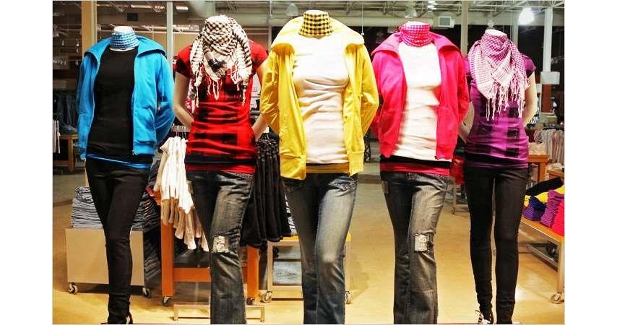
Apparel overall growth recovers
After a slowdown in Q3 post-demonetisation business the Clothing Manufacturers Association of India’s (CMAI) Q4 Apparel lndex (January-March FY2016-17) reveals that the apparel industry is slowly and surely making a recovery. The Q4 Index shows growth has improved mildly with overall index value moving up to 2.25, compared to 1.4 points in Q3.
After a slowdown in Q3 post-demonetisation business the Clothing Manufacturers Association of India’s (CMAI) Q4 Apparel lndex (January-March FY2016-17) reveals that the apparel industry is slowly and surely making a recovery. The Q4 Index shows growth has improved mildly with overall index value moving up to 2.25, compared to 1.4 points in Q3.
Growth recovery
In fact, demonetisation had affected the apparel sector so widely that businesses are still trying to recover from its impact. The latest CMAI Apparel Index shows, similar to last quarter, giant and large brands understood market sentiments and quickly, adapted, maneuvered their growth and recorded 10.58 and 6.72 points index value. Large brands however, recorded lower growth rate than previous quarter. Small brands, which were hit badly and recorded negative growth at -0.55 points in Q3, managed to turn positive with 0.62 points in Q4. Mid brands grew at 3.03 points up from 1.22 points in the previous quarter.
Giant brands managed a good 10.58 points with fast clearance of goods that increased sales turnover to 8 points. Comparatively, large brands sales turnover grew 5.78 points. Small and mid brand’s sales turnover also grew at 0.31 and 1.60 points respectively. Overall index value was most impacted by sales turnover than any other factor.
As in previous quarters, giant and large brands maintained their lead in Q4 as they outpaced mid and small brands. Indeed, small and mid brands managed a small growth in sales turnover perhaps mainly due to demonetisation and its impact on overall retail sales. Small retailers and brands associated with them had much larger transactions based on cash instead of credit cards or other digital modes. It may be noted that a small growth in sales indicates less stocks clearance.
Giant and large brands have connected with organised retail through MBOs, EBOs and large format stores and managed their business and sales turnover well. They may have taken the discounting route thereby stimulating sales to clear off inventory at store and company level. This is clearly reflected in increased sales turnover with not much increase in inventory holding.
Winning strategy
There is a strong correlation between sales turnover and inventory holding, which big brands have understood well. While small and mid brands are more dependent on trade and with less control on retail, they are not in a position to push up sales, large and giant brands are successfully using this as a tool, to stimulate sales turnover and restricting inventory holding.
As Sanjay K Jain, MD, TT Ltd, explains, “Both are interlinked. We managed the same way partly with our aggressive push in the last three months and because of yarn price rise.†Arguing on similar lines Vinod Kumar Gupta, MD, Dollar Industries, explains, “Increase in sales turnover roots in a decrease in inventory holding, as this is our, on the go season and there was huge demand. Due to this, our stocks sold out quickly. That’s how sales turnover increased and inventory holding reduced this season.â€
However, for small and mid-level brands improving sales turnover post demonetisation has been a challenge. Explaining the market situation, Niyam, Director, Blazo, says, “We expected 10 to 25 per cent growth, had demonetisation not taken place. However, we managed a small increase in sales turnover at 1 to 5 per cent.†While Hemant Gogri, Owner, John Noble, says they saw a dip in sales turnover, “The decrease was due to cutting down production as demand had dipped post-demonetisation.â€
Quarter outlook
As per the index for the coming quarter around 51 per cent brands feel is ‘Good’ and 41 per cent foresee an average outlook and 1 per cent (previous quarter also 7) feels it will be ‘Below Average’.
Next quarter being the first quarter of the new financial year 2017-18, brands assume the summer season, coupled with almost dry supply chain and shelves in quest of fresh goods and consumers will return to the stores.
FY2016-17: Sluggish growth
A close look at all four quarters of FY2016-17 reveals index values were much lower than comparable quarters in the previous fiscal. The annual index value dipped to 3.43 points in 2016-17, down from 5.32 points in FY 2015-16. Indeed this is ‘dismal’ growth. This fiscal was marked by low business sentiment especially in the last two quarters of the year, which saw disruptions during the festive season, perceived as a season that makes up for turnover losses, buying is high during this time of the year.
The index value was the lowest for October-December 2016 at 1.40 and followed by a low 2.25 points in January-March 2017, which is the first quarter of 2017 and last quarter of FY2016-17. The index grew most during April-June 2016 at 5.45 that is best of summer season and generally free of any EOSS, and 4.64 points in second quarter, also considered the pre-festive quarter, July-September 2016 and includes EOSS.
CMAI’s Apparel Index
CMAI’s Apparel Index aims to set a benchmark for the entire domestic apparel industry and helps brands in taking informed business decisions. For investors, industry players, stakeholders and policymakers, the index is a useful tool offering concrete and credible information, and is an excellent source for assessing the performance of the industry. The index is analysed on assessing the performance through four parameters: Sales turnover, sell through (percentage of fresh stocks sold), number of days of inventory holding and investments (signifying future confidence) in brand development and brand building.



